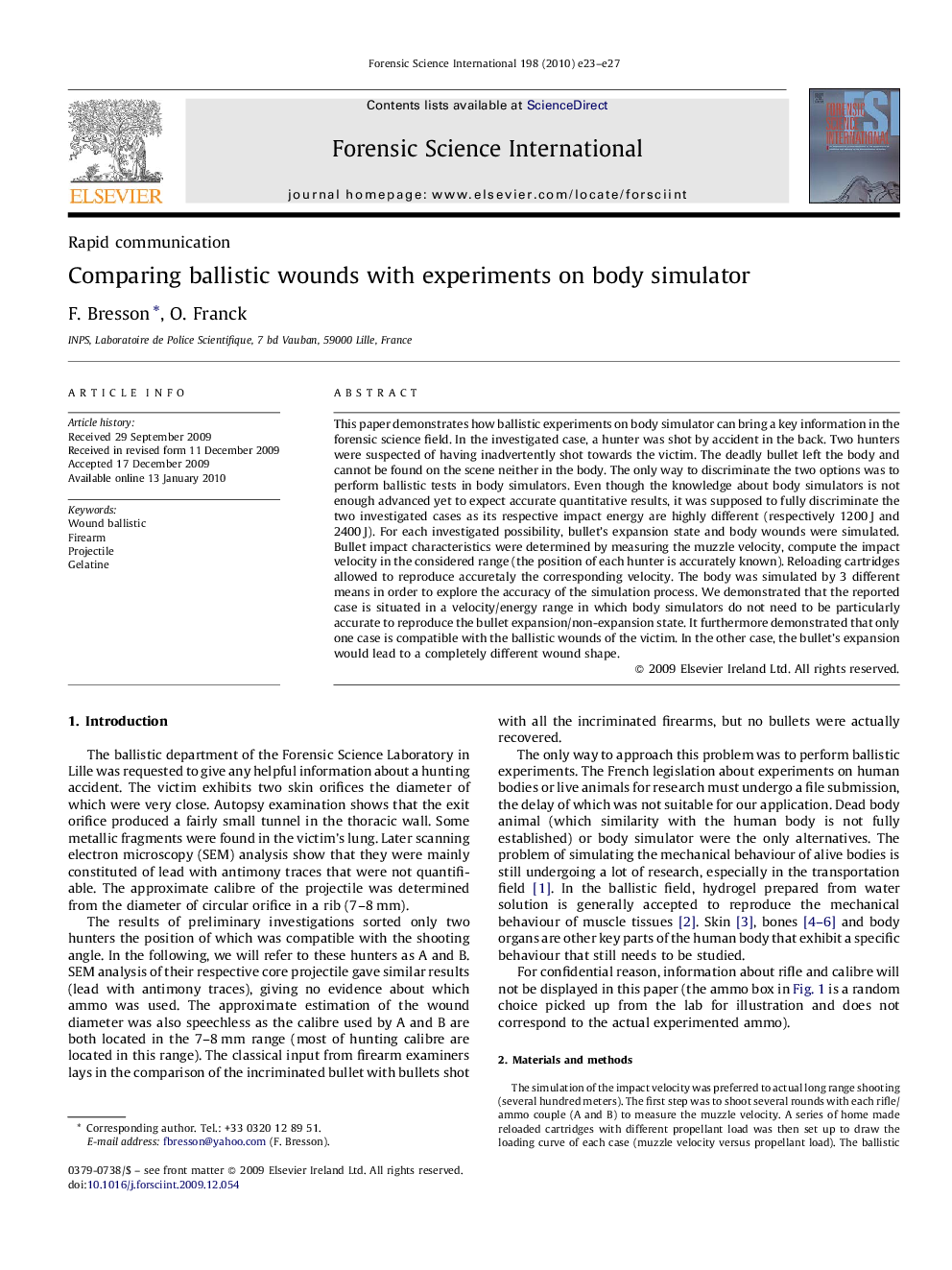| Article ID | Journal | Published Year | Pages | File Type |
|---|---|---|---|---|
| 97094 | Forensic Science International | 2010 | 5 Pages |
This paper demonstrates how ballistic experiments on body simulator can bring a key information in the forensic science field. In the investigated case, a hunter was shot by accident in the back. Two hunters were suspected of having inadvertently shot towards the victim. The deadly bullet left the body and cannot be found on the scene neither in the body. The only way to discriminate the two options was to perform ballistic tests in body simulators. Even though the knowledge about body simulators is not enough advanced yet to expect accurate quantitative results, it was supposed to fully discriminate the two investigated cases as its respective impact energy are highly different (respectively 1200 J and 2400 J). For each investigated possibility, bullet's expansion state and body wounds were simulated. Bullet impact characteristics were determined by measuring the muzzle velocity, compute the impact velocity in the considered range (the position of each hunter is accurately known). Reloading cartridges allowed to reproduce accuretaly the corresponding velocity. The body was simulated by 3 different means in order to explore the accuracy of the simulation process. We demonstrated that the reported case is situated in a velocity/energy range in which body simulators do not need to be particularly accurate to reproduce the bullet expansion/non-expansion state. It furthermore demonstrated that only one case is compatible with the ballistic wounds of the victim. In the other case, the bullet's expansion would lead to a completely different wound shape.
